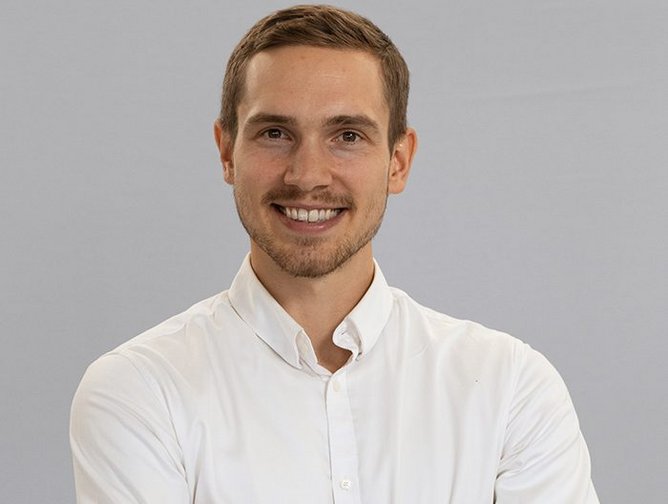Danfoss and an energy efficiency and decarbonisation journey

Mads Clausen founded Danfoss in his parents' farmhouse in Nordborg, Denmark, on September 1, 1933. Since then, the business has grown into one of the world's leading suppliers of innovative, energy-efficient solutions, best known as a producer of components within the hydraulic off-road vehicle industry and, in particular, refrigeration.
In 2020, the company announced its ambition to be carbon-neutral across the entirety of its global operations within a decade and signed up for the Science-Based Targets initiative. To achieve this ambitious goal, Danfoss utilises carbon-neutral electricity for all its locations in Denmark and Germany through a Power Purchase Agreement (PPA), which, since January 2021, has delivered 25% of the group's total electricity consumption.
On top of altering its energy source, the company is also currently focusing on energy efficiency, according to Jonas Loholm Hamann, Business Process Expert at Danfoss.
"At the minute, the world is going in a very interesting direction, focusing on one of three key areas: air quality, limiting fossil fuel-based energy, or assessing climate targets again,” Hamann says. "It fits very well into the company’s core DNA."
Hamann will be speaking at Sustainability Live this week in the panel on Decarbonisation on the Main Stage on Wednesday February 23.
Danfoss’ first steps to decarbonisation: energy efficiency
The company began by optimising the energy contained within its production processes and offices, placing particular focus on waste heat in the past five years.
"We first looked at how we could optimise the energy system in our little campus area and then installed equipment repurposed from different streams," Hamann says. "We have a data centre and other units that work by cooling the data that's in the UPS system."
"Heat is the by-product resulting from that, which is then distributed to other parts of our production or facility to decarbonise the comfort heating or some of the process heating as well. Each step in this is completed with our own technology.”
Typically, such a system would produce heat at around 25-30˚ C. Danfoss takes this heat and pairs it with a heat pump - a highly-energy-efficient machine, in principle - to boost the temperature. High source temperature, such as the heat emitted from a data centre, usually has higher efficacy.
"For every part of electricity that your unit of electricity puts into the heat pump, you get six parts heat out. It's a very efficient machine. We are taking the data centre we have, recovering the waste heat, putting it into the heat pump that then boosts the heat heating 10 folds of higher quality of heat and so then it would reach 60 to 70˚ C," he says. "And then you distribute that in district heating or heat networks."
Data centres are, according to Hamann, a good heat source. He says “installing this kind of system is actually an excellent way of decarbonising whilst still keeping the costs relatively low”. It also has the potential to provide heat that is cheaper for the end customer. Danfoss is currently running this system through its facilities and projects in Denmark, the UK, and China.
"In recent years, legislation has been released that's also pushing the reuse of waste heat in a positive direction," Hamann adds. "If we want to reach the climate targets, and to do it in a cost-efficient way, we have to do it in a smart way also. And I think this will definitely be part of the solution. It is not the full solution, but it'll be part of it."

The era of retrofitting into a more energy-efficient model
According to Hamann, the outlook for this type of technology is promising because “it correlates with the current challenges, from an energy and environmental perspective”. In other words, the higher the source temperature, the better, because then you have something that is more efficient and lower cost in terms of the heat output that you get. It allows the decarbonisation of cities and communities and down to the individual buildings.
"Around 40 to 60% of buildings are already built, so there is a lot of stuff we need to retrofit," he said. "In the first instance, you need to optimise the default in terms of the technology that you have, and what we see is a lot of stuff that is being retrofitted now, especially around these, but also for residential heat pumps."
Jonas further described the process as something that might be beneficial for the community. For instance, 25 to 50 residential single-family houses might produce the amount of heat that can be actually used to reheat a small community.
"What you can do is that you look at your heating needs, and then if you have a surplus of heat at certain times of the year, then you can choose to export it. And how you can do that is that any type of waste heat that you might have from refrigeration equipment, at a dairy farm, or a data centre, or a supermarket or something like that, you can recover that heat and then distribute it in a heat network."
For instance, a Danish supermarket called Meny reduced its annual heating bill by 89.7% and its carbon footprint by 6.7 tonnes a year by making use of the waste heat from its refrigeration system.
However, Jonas also sees some trouble ahead, something he calls "the electric electricity spark or the price (gap) between gas and electricity”.
“In areas where you have very low gas prices and very high electricity prices, then there's a smaller incentive to move towards green electricity, basically. And that's one of the things that are appearing in the market that is a bit difficult and, and makes it difficult to have a good ROI on a heat pump.”
• Join global business leaders and sustainability experts taking meaningful action at Sustainability LIVE, held at Tobacco Dock, London, 23-24 February 2022. Register to attend today! Click here to learn more






